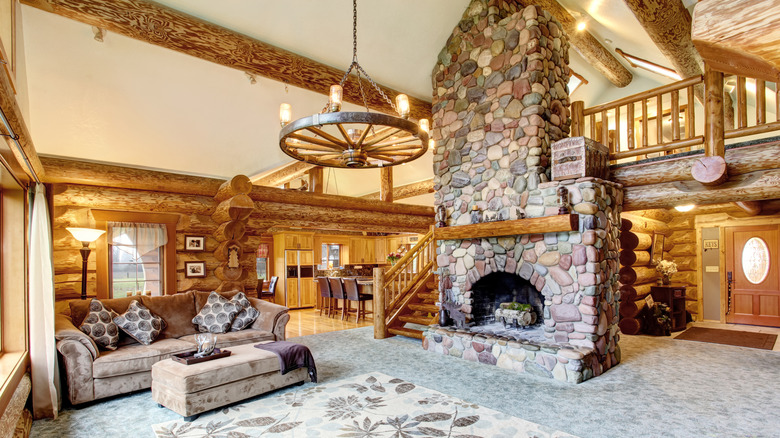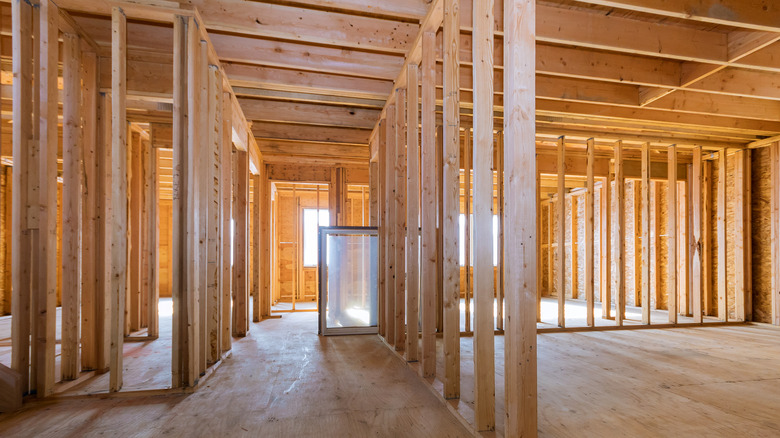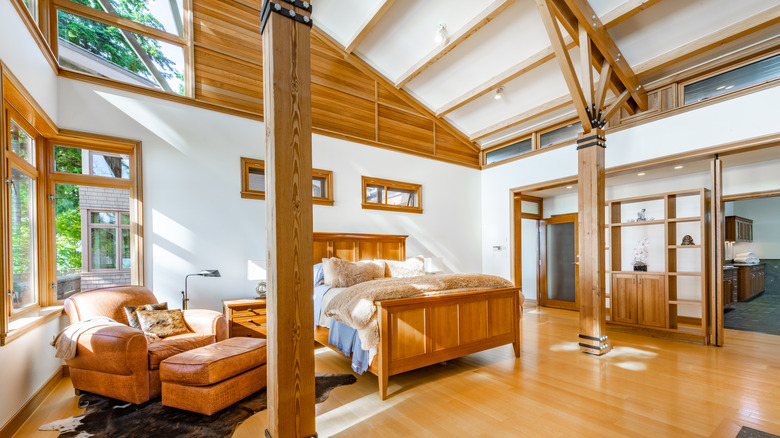Do High Ceilings Add Value To A Home?
Whether you're trying to build or choose your dream home, the process is all about fine-tuning the balance between design and your budget. Most design elements take the form of physical objects — the use of a particular material, the location or number of windows which add light to a space, and even unseen elements of a home such as a drainage or insulation are crucial to home design. However, one of the most impactful considerations in a house is the height of your ceilings. According to Hallmark Homes, high ceilings are a feature that takes your home to the next level — both in terms of aesthetics, space, natural light, and of course, resale value.
We know now that there are scientific justifications for people's preference for higher ceilings. However, mental well-being impacts how we feel physically, too, and living in a space that promotes better mental well-being will have other knock-on effects, too. According to PropertyGuru, several studies have shown that high ceilings can improve focus and decision-making abilities and encourage abstract thinking. Depending on the climate where you live, there may also be some associated savings from the improved ventilation offered by a high ceiling, but this is more context-specific.
So, if high ceilings are so wonderful, why don't we all have them? Keep reading to find out.
Did high ceilings go out of fashion?
Before the middle of the 20th century, there was a large spread of ceiling heights in homes. The height of a building's ceiling might tell you something about the affluence or forward-planning of the person who designed and/or lived in it. However, according to Life of an Architect, adding to ceiling height has a negligible impact on building costs; rather, you'll end up spending more on windows and doors so that they stay proportional to the room. The biggest cost impact, though, is on fuel (via Attainable Home); a lower-ceilinged room is more efficient in heating and cooling. They're also much easier to paint and clean.
For affluent Victorians, this made no difference, and with all the smoking that happened a few hundred years ago, the extra ventilation and status that high ceilings gave to people saw the average height of a room increase to 13 feet, according to The Examiner News, compared to the standard 8 or 9 feet heights we see today.
Even more than homeowners worrying about rising fuel costs throughout the late 20th and early 21st century, increased standardization of production after WWII saw almost every lumber producer in America default to making 8-foot-long studs unless specifically directed to do otherwise.
When are high ceilings worth it?
Depending on the type of home and the market, a vaulted ceiling may be worth more or less. The size of the space as a whole, the amount of natural light, any exposed beams, and other ceiling designs all affect how much value the vaulted ceiling will contribute to your property. Typically, high ceilings boost a home's value by 5% to 25%; in fact, the National Association of Property Builders found that raising ceiling height increased property values by an average of $4,000.
However, context is critical. In terms of finance, according to The Plan Collection, high-ceilinged modern homes are associated with livability and resale value — not necessarily utility bills. Climatically, high ceilings work best in homes that require a lot of cooling in the summer and not too much heating in the winter. This is because hot air rises and cold air stays close to the ground, so according to The Times of India, low ceilings trap hot air close to people in the summer, making them use more AC to keep cool.
Having said this, if you have hot summers and cold winters, you will need to weigh the extra winter heating costs against the summer energy savings. High ceilings can add aesthetic and resale value to your home but ensure extra running costs don't outweigh those gains.


